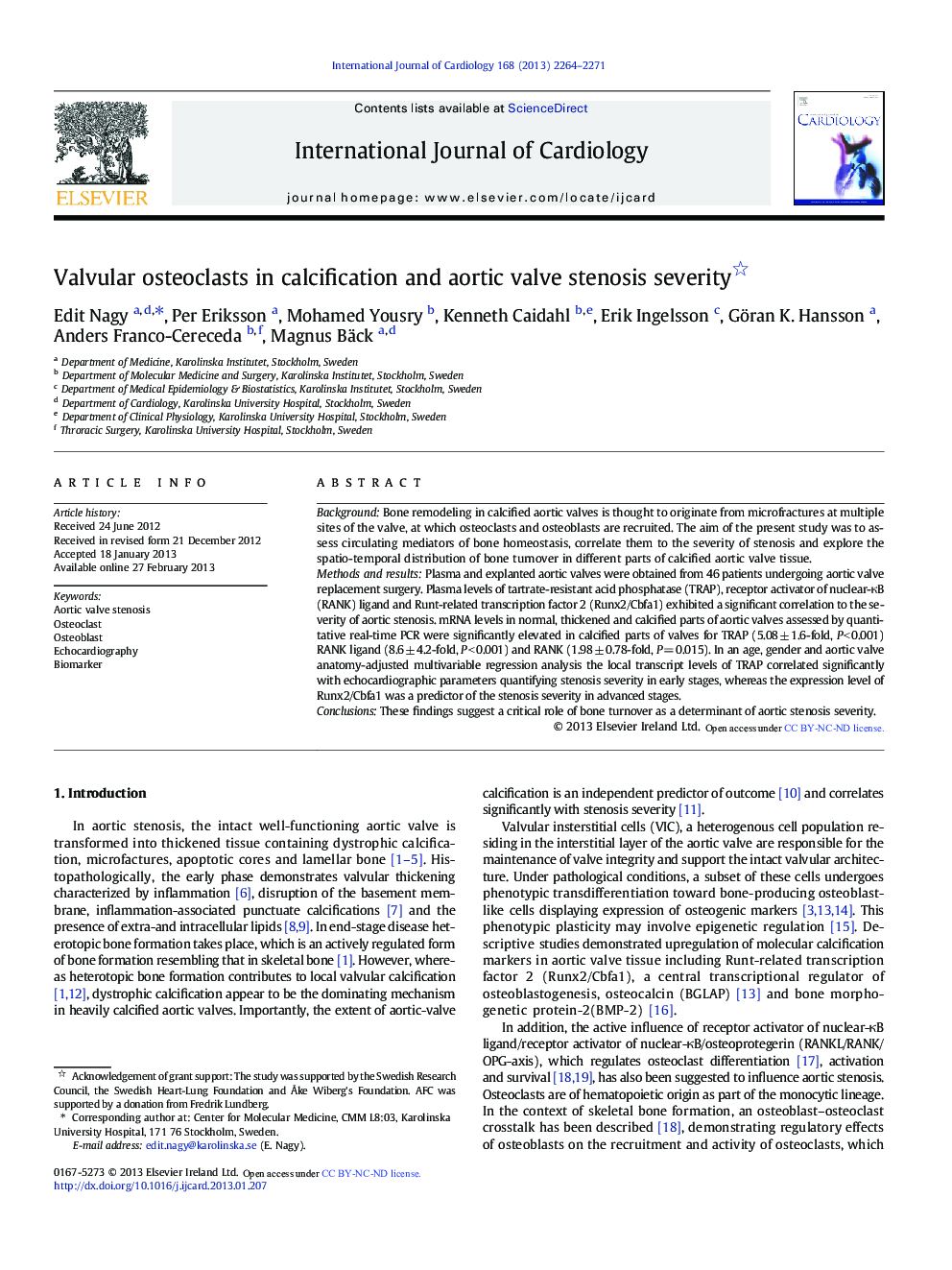| Article ID | Journal | Published Year | Pages | File Type |
|---|---|---|---|---|
| 5976277 | International Journal of Cardiology | 2013 | 8 Pages |
BackgroundBone remodeling in calcified aortic valves is thought to originate from microfractures at multiple sites of the valve, at which osteoclasts and osteoblasts are recruited. The aim of the present study was to assess circulating mediators of bone homeostasis, correlate them to the severity of stenosis and explore the spatio-temporal distribution of bone turnover in different parts of calcified aortic valve tissue.Methods and resultsPlasma and explanted aortic valves were obtained from 46 patients undergoing aortic valve replacement surgery. Plasma levels of tartrate-resistant acid phosphatase (TRAP), receptor activator of nuclear-κB (RANK) ligand and Runt-related transcription factor 2 (Runx2/Cbfa1) exhibited a significant correlation to the severity of aortic stenosis. mRNA levels in normal, thickened and calcified parts of aortic valves assessed by quantitative real-time PCR were significantly elevated in calcified parts of valves for TRAP (5.08 ± 1.6-fold, P < 0.001) RANK ligand (8.6 ± 4.2-fold, P < 0.001) and RANK (1.98 ± 0.78-fold, P = 0.015). In an age, gender and aortic valve anatomy-adjusted multivariable regression analysis the local transcript levels of TRAP correlated significantly with echocardiographic parameters quantifying stenosis severity in early stages, whereas the expression level of Runx2/Cbfa1 was a predictor of the stenosis severity in advanced stages.ConclusionsThese findings suggest a critical role of bone turnover as a determinant of aortic stenosis severity.
